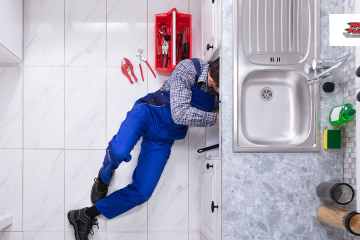Water damage is one of the most common and costly problems homeowners face. Whether it’s from a burst pipe, a severe storm, or a simple leak that went unnoticed, water can cause significant structural damage, ruin personal belongings, and lead to mold growth if not addressed promptly. The good news is that many instances of water damage can be prevented with proactive measures and regular maintenance. By taking the time to prepare your home, you can protect your property, save money on repairs, and avoid the stress that comes with water damage.
This article provides practical tips and strategies for preparing your home against potential water damage, helping you safeguard your investment and maintain a safe, dry living environment.
1. Inspect and Maintain Your Roof
Your roof is your home’s first line of defense against the elements, and a well-maintained roof is crucial for preventing water damage.
- Regular Inspections
Schedule regular roof inspections, at least twice a year, ideally in the spring and fall. Look for signs of wear and tear such as missing, cracked, or curled shingles, as well as damaged flashing around chimneys, vents, and skylights. Pay attention to areas where water might pool or where shingles appear worn, as these are common spots for leaks to develop. - Gutter Maintenance
Gutters play a vital role in directing water away from your home’s foundation. Clogged or damaged gutters can lead to water overflowing and seeping into your roof or basement. Clean your gutters and downspouts regularly, especially after heavy storms or when leaves have fallen. Ensure that downspouts direct water at least 3 to 4 feet away from your foundation to prevent pooling around your home. - Address Roof Repairs Promptly
If you notice any damage during your inspection, don’t delay repairs. Even minor issues can escalate quickly, leading to significant water damage inside your home. Hiring a professional to address these problems can save you money in the long run and give you peace of mind during the next storm.
2. Safeguard Your Home’s Foundation
Water damage doesn’t just come from above—it can also seep into your home from below. Protecting your home’s foundation is critical in preventing water from entering your basement or crawlspace.
- Proper Grading
The ground around your home should slope away from the foundation to prevent water from pooling and seeping into the structure. If your yard is flat or slopes toward your home, consider regrading the landscape. This might involve adding soil around the foundation or installing a French drain system to direct water away. - Inspect Foundation Cracks
Cracks in your foundation can be an entry point for water. Inspect your foundation regularly for any visible cracks, both inside and outside your home. Small cracks can be sealed with masonry caulk or hydraulic cement, but larger cracks might require professional attention. - Install a Sump Pump
If your home has a basement, installing a sump pump is one of the most effective ways to prevent water damage. A sump pump automatically removes water that accumulates in a sump basin, typically located in the basement’s lowest point. Choose a sump pump with a battery backup, ensuring it will continue to operate during a power outage.
3. Prevent Plumbing Disasters
Your home’s plumbing system is another potential source of water damage. By taking proactive steps, you can reduce the risk of leaks, bursts, and other plumbing-related issues.
- Check for Leaks
Regularly inspect your plumbing for leaks, focusing on areas under sinks, around toilets, and near appliances like dishwashers and washing machines. Even small leaks can lead to significant damage if left unchecked. Look for signs of moisture, such as water stains, mold, or dampness on walls and floors. - Replace Aging Pipes
Older homes with galvanized steel or polybutylene pipes are at higher risk of leaks and bursts due to corrosion or deterioration. If your home has older pipes, consider upgrading to modern materials like copper or PEX. While this can be an expensive project, it’s a worthwhile investment to prevent future water damage. - Install Water Alarms
Water alarms, or leak detectors, are small devices that alert you to the presence of water in areas where it shouldn’t be, such as under sinks, behind toilets, or near appliances. These alarms can help you catch leaks early, before they cause significant damage. Consider installing them in areas prone to leaks or flooding. - Know Where Your Main Water Shut-Off Valve Is
In the event of a major leak or burst pipe, knowing how to quickly shut off your home’s water supply can prevent extensive damage. Make sure everyone in your household knows the location of the main water shut-off valve and how to use it. Consider labeling the valve for easy identification.
4. Protect Your Home’s Interior
While exterior maintenance is crucial, it’s equally important to take steps inside your home to prevent water damage.
- Monitor Humidity Levels
High humidity levels can lead to condensation, which in turn can cause water damage and mold growth. Use dehumidifiers in areas prone to moisture, such as basements and bathrooms. Aim to keep indoor humidity levels between 30% and 50% to prevent condensation on windows, walls, and floors. - Install Window Well Covers
If your basement has windows below ground level, installing window well covers can prevent water from accumulating and leaking into your basement. Choose covers that are clear to allow light in but are strong enough to hold up against heavy rain or snow. - Use Waterproof Materials
In areas prone to moisture, such as bathrooms, kitchens, and basements, opt for waterproof or water-resistant materials for flooring, walls, and furniture. Tile, vinyl, and laminate are excellent choices for flooring, while water-resistant paint can protect walls from moisture damage. - Store Valuables Safely
If you have valuable items stored in your basement, consider moving them to higher ground or using waterproof storage containers. This simple step can protect your belongings in the event of a flood or leak.
5. Prepare for Storms and Emergencies
Even with the best preventative measures, storms and emergencies can still cause water damage. Being prepared can minimize the impact and help you recover more quickly.
- Create an Emergency Plan
Develop a family emergency plan that includes steps to take in the event of a flood or severe storm. Ensure everyone in your household knows the plan, including evacuation routes and emergency contacts. - Assemble an Emergency Kit
Prepare an emergency kit with essentials like bottled water, non-perishable food, flashlights, batteries, and a first-aid kit. Include copies of important documents, such as insurance policies and identification, in a waterproof container. - Stay Informed
Pay attention to weather forecasts and warnings, especially during storm season. Sign up for local alerts and notifications to stay informed about potential flooding or severe weather in your area. - Consider Flood Insurance
Standard homeowner’s insurance policies typically do not cover flood damage. If you live in an area prone to flooding, consider purchasing flood insurance to protect your home and belongings.
One of the most effective ways to safeguard your home from water damage is by partnering with a professional restoration service like Dry Pros. Their expertise in water damage prevention and restoration ensures that your property remains protected and can quickly recover from any unexpected incidents.
Conclusion: Taking Proactive Steps to Prevent Water Damage
Water damage can be devastating, but with proactive preparation, you can significantly reduce the risk to your home. By maintaining your roof and foundation, safeguarding your plumbing, protecting your interior, and preparing for storms, you can ensure that your home is well-defended against water damage. Taking these steps not only protects your property but also provides peace of mind, knowing that you’ve done everything possible to keep your home safe and dry.



